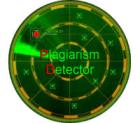Model Afeksi Level Kelompok Pendekatan Input-Process-Output: Sebuah Agenda Riset
Keywords:
group affective tone, input-process-output (IPO), affective convergence mechanismAbstract
Affection in the group level becomes an interesting phenomenon to be examined. This study developed a group-level affection model which is called Group Affective Tone (GAT) with an input-process-output (IPO) model. This model reveals the theory and concept of affective convergence mechanism, emergent process and consequent of GAT. Furthermore, the researcher tried to address areas that could potentially be research topics related to group-level affection.
References
Côté, S. (2007). Group emotional intelligence and group performance. In E. A. Mannix, M. A. Neale, & C. P. Anderson (Eds.), Research on managing groups and teams, 309–336.
Decety, J., & Jackson, P. L. (2004). The functional architecture of human empathy. Behavioral and Cognitive Neuroscience Reviews, 3(2), 71–100.
Erez, A., Misangyi, V. F., Johnson, D. E., LePine, M. A., & Halverson, K. C. (2008). Stirring the hearts of followers: Charismatic leadership as the transferral of affect. Journal of Applied Psychology, 93(3), 602–616.
Forgas, J. P. (1995). Mood and judgment: The Affect Infusion Model (AIM). Psychological Bulletin, 117(1), 39–66.
George, J. M. (1990). Personality, affect, and behavior in groups. Journal of Applied Psychology, 75(2), 107–116.
_________. (1995). Leader positive mood and group performance: The case of customer service. Journal of Applied Social Psychology, 25(9), 778–794.
_________. (1996a). Group affective tone. In M. A. West (Ed.), Handbook of work group psychology, 77–93.
_________. (1996b). Trait and state affect. In K. R. Murphy (Ed.), Individual differences and behavior in organizations, 145–171.
_________. (2002). Affect regulation in groups and teams. In R. G. Lord, R. J. Klimoski, & R. Kanfer (Eds.), Emotions in the workplace: Understanding the structure and role of emotions in organizational behavior, 183–218.
_________. (2011). Dual tuning: A minimum condition for understanding affect in organizations?. Organizational Psychology Review, 1(2), 147–164.
Hackman, J. R. (1987). The design of work teams. In J. W. Lorsch (Ed.), Handbook of organizational behavior, 315–342.
Johnson, S. K. (2008). I second that emotion: Effects of emotional contagion and affect at work on leader and follower outcomes. The Leadership Quarterly, 19(1).
Kelly, J. R., & Barsade, S. G. (2001). Mood and emotions in small groups and work teams. Organizational Behavior and Human.
Kozlowski, S. W. J., & Ilgen, D. R. (2006). Enhancing the effectiveness of work groups and teams. Psychological Science in the Public Interest, 7(3), 77–124.
Papousek, I., Freudenthaler, H. H., & Schulter, G. (2008). The interplay of perceiving and regulating emotions in becoming infected with positive and negative moods. Personality and Individual Differences, 45(6), 463–467.
Troth, A. C., Jordan, P. J., Lawrence, S. A., & Tse, H. (2012). A multilevel model of emotional skills, communication performance, and task performance in teams. Journal of Organizational Behavior, 33, 700–722.
Watson, D., Clark, L. A., & Tellegen, A. (1988). Development and validation of brief measures of positive and negative affect: The PANAS scales. Journal of Personality and Social Psychology, 54(6), 1063–1070.








